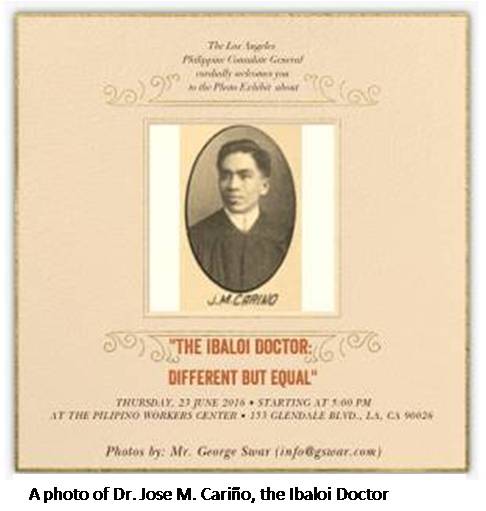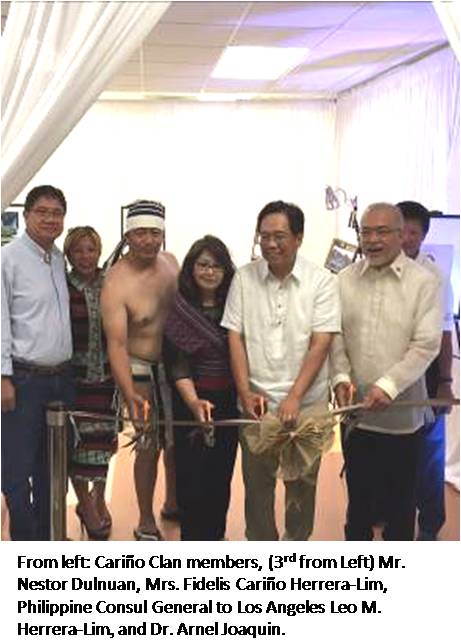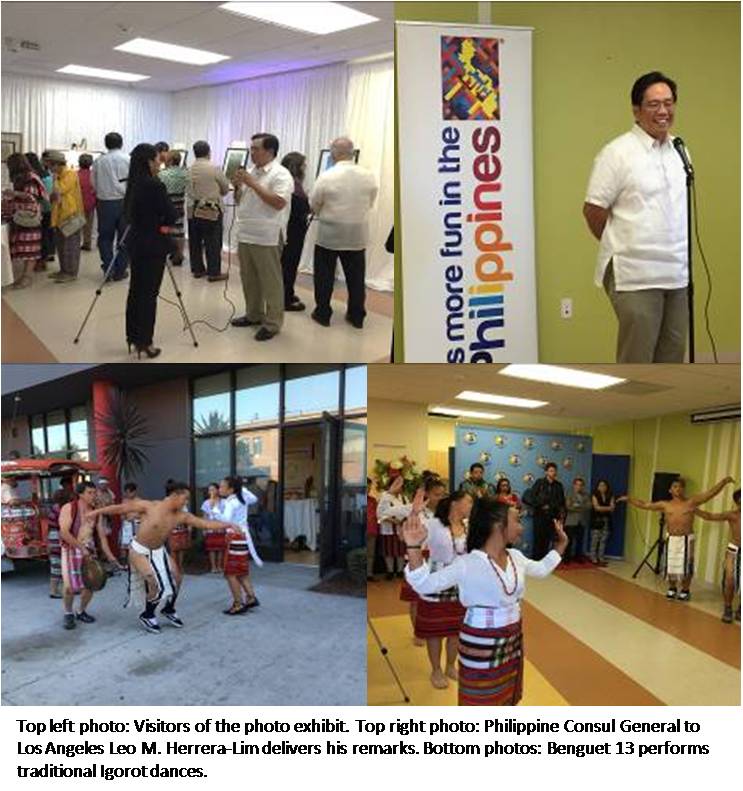
30 June 2016 – The Philippine Consulate General in Los Angeles held a photo exhibit featuring the life of a member of the Ibaloi tribe of Northern Philippines, Dr. Jose Mateo Cariño. Photos representing the milestone moments of Dr. Cariño’s life were displayed at the Pilipino Workers Center in Los Angeles California on June 23.
The Cariño family belongs to the Ibaloi tribe that had its beginnings in the 1300s. They had vast tribal land. Ibalois believed in a traditional concept that their whole daily life revolved around their land. They were the "baknang" family held in esteem, considered the head of the communities and given important positions by the Spanish colonizers.
Dr. Cariño is the son of Mr. Mateo Cariño, the Ibaloi Chieftain, who owned expansive lands where his tribe raised cattle, produced root crops such as potatoes, taro, and coffee. Mr. Mateo Cariño was named centennial hero in 1998 by the Philippine Centennial Commission. His bust stands together with other centennial heroes at the Rizal Park in Manila.
One of the featured photos is the old passport document of Dr. Cariño. This was his travel document when he went to Chicago to study medicine, where he stayed at the YMCA. He even joined the Cosmopolitan Club Chicago Chapter. Dr. Jose Cariño graduated with a degree in medicine from Rush Medical University in 1918. He completed his residency in Pittsburgh Philadelphia. Rush Medical University was the first Medical College that was chartered and the first health care institution in Chicago. While he was abroad, Dr. Cariño also wrote a remarkable letter to Senator Harry Hawes advocating for the indigenous community’s desire for Philippine independence.
Dr. Jose Cariño returned to the Philippines in 1918. He became the Director of the Baguio General Hospital (BGH) and the first Igorot Mayor of Baguio (from 1946-1949). He initiated the construction of BGH from 1949-1950. With his acquired knowledge from the US, he found ways to preserve the values of his tribe.His decision to donate land for specific use by the government made them part of a patrimony of the future residents of Baguio and took them away from exclusive ownership and use.
Members of the media and the Filipino community attended the photo exhibit to get to know more about the story of the Ibaloi Doctor. The event was even made more special with the traditional dance presentations of the members of Benguet 13.
The Philippine Department of Tourism in LA led by the Tourism Director, Mr. Richmond Jimenez, also featured tourist destinations in Baguio and disseminated information about tour packages available.

In his remarks, Consul General Leo Herrera-Lim highlighted why the exhibit was entitled “Different but Equal.” The reason was that the Ibaloi Doctor, Dr. Cariño, broke all the barriers and stereotypes given to those living in the mountains or what was known in the Philippines as the “Igorot.” Dr. Cariño showed that although they may have different beliefs, cultures and traditions, they are the equal of any individual in terms of their skills, abilities and intelligence, especially after he finished his medical degree in the United States in one of the best known medical schools in Chicago. Adding to this, Dr. Cariño shared his knowledge and helped his hometown through his services and eventually as director of the BGH.
The event concluded with the remarks of Madame Fides Herrera-Lim who is also a member of the Ibaloi tribe and a descendant of Dr. Cariño. She thanked the attendees and all those who made the exhibit possible to be able to share a part of history to Filipinos living in Los Angeles.
These are the stories that may not have been told in the school’s textbooks but are equally significant and should be told to the future generations of Filipinos so that they may continue to learn from their past as they move in their path towards the future. END


